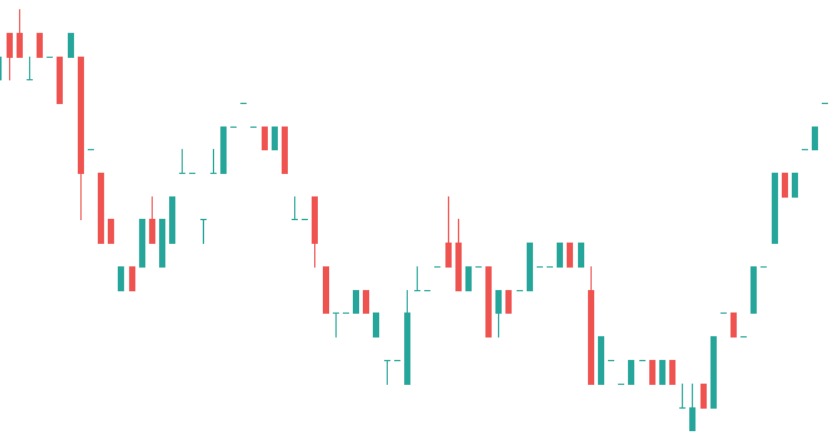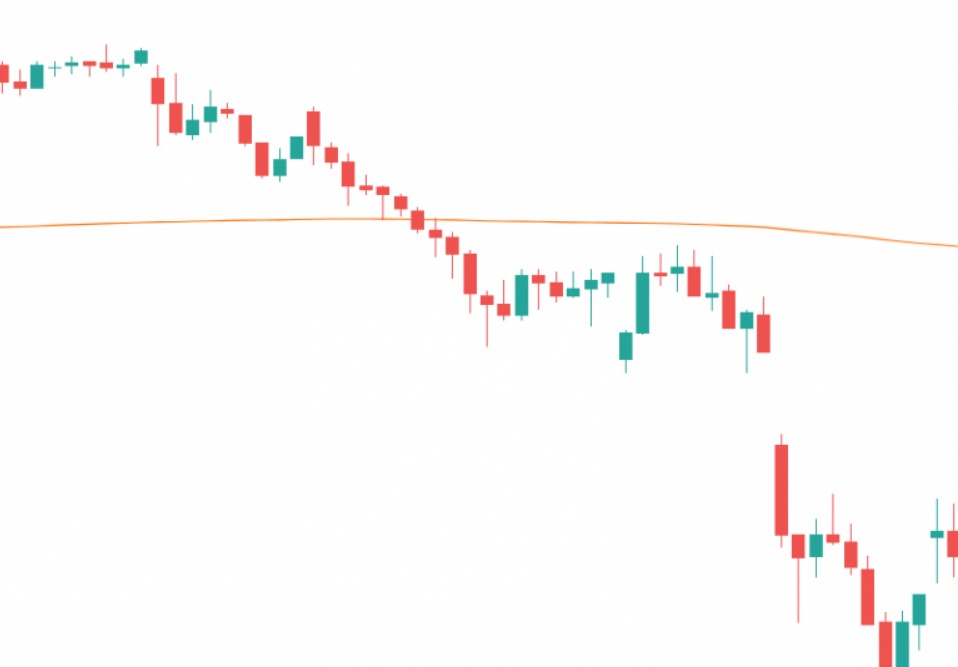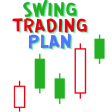Table of Contents
Swing trading is a popular trading method that seeks to profit from medium-term price movements ranging from a few days to several weeks. Because it is slower paced than some other trading forms, such as day trading, it is ideal for beginners or even more experienced traders looking for a trading form that can be readily paired with a full-time work. So, given these circumstances, is trading actually profitable? Can swing trading make you rich?
Swing trading can undoubtedly help you get rich. With an average yearly return of roughly 30%, you would double your cash every three years, resulting in massive gains over time. Warren Buffet, the famed investor known as the “oracle of Omaha,” made his wealth by generating annual returns of roughly 20%. This demonstrates how compounding may work wonders in the long term!

After determining that swing trading can lead to financial success, you may have further questions about the original question.
In this piece, we will attempt to address the following questions:
- How much money can I make from swing trading?
- How many swing traders end up becoming profitable? What can you do to boost your chances of actually winning?
- How can I start swing trading easily and effectively?
As you can see, we have a lot to cover, so let’s start off right away!
Can Swing Trading Make You Rich? How Much Money Can You Make in Swing Trading: What is a Reasonable Return on Swing Trading?

The subject of how much a swing trader makes comes up all the time. In fact, we’ve dedicated an entire post to discussing the types of profits you might expect as a swing trader.
To put it simply, swing trading can earn you anywhere from 10% to 50% each year if you have a well-tested and confirmed trading method.
As you can see, there is a fairly wide range, and where your returns will end depends heavily on factors such as:
- Position sizing: Evidently, the more you risk, the greater the winners and losers will be. As traders, we always strive to establish a balance between risk and return. If we take too many risks, we risk being completely wiped out. On the other side, if we take on too little risk, our returns will be insufficient to compensate for our efforts.
- Opportunity: Of course, the more trades you can execute, the better your returns will be. Trading multiple stocks is one approach to ensure that you have ample opportunities. This should not be an issue because there are literally thousands of stocks to pick from.
- Your ability to follow the strategy: Trading strategies are crucial for gaining an edge. Deviating from them might lead to negative outcomes.
A return of 10% or more is regarded satisfactory, as it is comparable to the market average. Remember that very few money managers, even those who are specialists, manage to outperform the market!
Also Read: Is Swing Trading More Profitable Than Long Term Investing?
What Percentage of Swing Traders are Profitable?
You’ve probably heard that 90-95% of traders lose money in the markets. It may be difficult to understand, but while it is more of an informed assumption, we don’t believe it is too farfetched. Most people will not become wealthy by trading!
The problem with these numbers is that most people assume they can enter the markets without sufficient education and/or experience. This is a curious assumption, given that any other occupation requires education or training to be performed well and correctly.
In simple terms, the most important thing you can do to avoid becoming a losing trader is to ensure that you have the necessary expertise or education to navigate the markets. Later in the piece, we’ll go over what you can and should do to learn how to trade!
How Much Money Do You Require to Be a Swing Trader? Realistic Considerations
When selecting how much money to invest in swing trading, you should consider a few factors. Let’s take a look at the many aspects at play and how they influence the minimal quantity required.
First and foremost, remember that there are no minimum capital requirements to begin swing trading stocks. However, there are several key factors to examine that will determine what constitutes an acceptable minimum amount in your specific circumstance.
Risk acceptance: In general, you should limit your risk per trade to a few percentage points of your account balance. Otherwise, you risk falling into drawdowns that are irreversible owing to their sheer enormity. For example, a 90% drawdown would necessitate a tremendous return of 900% merely to reach breakeven.
The price of the stocks you trade: A stock might range from a few pennies to hundreds of dollars. If you’re short on cash, you may have to forgo some of the more expensive equities to limit the amount risked on each trade at an acceptable level.
For example, if you have $1000 and want to buy a $500 stock and set your stop loss 10% below the entry price, you are risking 5% of your whole account value. As you can see, this is far higher than the required 2-3%, which may indicate that you cannot afford to acquire that stock.
Commissions: One of the most significant aspects of any trading strategy is how fees and trading costs affect your trade. Depending on the cost structure you chose, you may need to take larger positions in dollars in order to avoid commissions taking up too much of your trading capital.
As a result, you should always strive to keep your commission and transactional costs as low as possible! Today, there are even brokers who provide $0 commission programs, which effectively eliminates this issue.
The Effect of Slippage on Your Trades (Essential!)

Before investing in a stock, you must assess its liquidity. To have your orders not only placed, but also executed at the price shown in the chart, you must find some buyers or sellers who are willing to accept the price you are offering. In other words, the market must be sufficiently liquid to absorb your orders without excessive slippage.
Slippage occurs when there are no buyers or sellers prepared to take the opposite side of the trade, forcing you to accept a lower price.
Slippage can even turn seemingly good trading methods into losing ones. This is more of a problem for smaller equities with minimal liquidity, such as many penny stocks.
If you continue to trade large-cap or mid-cap companies, this is rarely an issue. Swing trading tactics typically yield significant profits and can withstand slippage. Because their individual profits are typically minimal, day traders must frequently check market liquidity.
How to Figure out If a Market Has Low Liquidity
The most straightforward method is to analyze the average daily trading volume of equities. Very liquid equities have a daily trading volume of several million or tens of millions of dollars, thus you’re unlikely to have significant slippage on your trades. You should be comfortable trading equities with volumes of $1,000,000 or more, as long as you don’t take large positions.
Another easy technique to gauge market liquidity is to look at how the bars appear on the chart. If there are many gaps and irregular movements, you’re dealing with a low-liquidity market.
Also Read: Swing Trading Psychology
To continue on this topic, consider looking at smaller timeframes, such as 5, 10, or 15-minute bars, and seeing whether the same holds true for those bar resolutions. The deeper down you can go with smooth moves, the more liquid the market becomes. It merely demonstrates that, despite the short timeframe, enough trades were executed over that time period to make the bars appear even.
The illustration below shows an example of a market that plainly lacks liquidity.

The illustration below, on the other hand, shows a market with moderate to high liquidity.

After Hours Trading
The after-hours market, where stocks can be traded outside of regular trading hours, is typically illiquid, especially for large stocks. As a result, it is recommended that you limit your trading time to regular business hours.
How to Start Swing Trading
With being said, we wanted to share a few simple tips on how you can get started with swing trading and begin your journey to getting wealthy. There are two methods to approach this:
- Learn to swing trade on your own.
- Take a trading course.
Let’s look in detail at both these two options!
Learn to swing trade on your own
It is undoubtedly possible to learn swing trading on your own and begin your trip to wealth that way. However, you must prepare for a trial-and-error process in which the majority of the things you try will fail.
Here are few short tips if you want to learn swing trading on your own:
- Learn to back test: This is a valuable ability to have since it allows you to test the historical performance of the trading tactics you intend to use. We would go so far as to state that it is critical to your success as a swing trader! Check out our back testing article for additional information!
- Start Building your trading strategies: After learning how to back test ideas, it’s time to develop trading methods.
- Trade: It’s now time to start trading the strategy and go on your trip to riches! Hopefully, if you developed the approach correctly, you should have the chances in your favor!
Take a trading course!
If you want to escape the frustration of always trying different tactics and ideas and not finding anything, you should seriously consider taking a trading course. That way, you’ll get all of the tools you need to start trading right away, which typically saves you more money than the course itself.
Swing Trade Plan may appear biased due to our own trading training. We don’t believe that this is the case. We’ve simply seen too many students who have been struggling for a long time finally get it after learning a proper, tested trading approach!
Conclusion
As you can see, swing trading may be very profitable if you have a long enough time horizon. Trading should be viewed as a marathon rather than a sprint because compounding effects are most noticeable at this point. Furthermore, it enables for much better risk control because you don’t have to employ large transaction sizes to achieve your return objectives.
Frequently Asked Questions
1. How much money can I make in swing trading?
- Swing trading offers potential rewards ranging from 10% to 50% every year. Your real returns are decided by factors such as your trading strategy, position sizing, and ability to follow predefined regulations.
2. What factors influence my returns in swing trading?
- Position sizing, the number of trading opportunities, and your trading approach all have an impact on your returns. Balancing risk and return is critical for avoiding substantial losses.
3. What is the average return in swing trading?
- Swing trading yields an average return of 10% or more, which is consistent with the market average. Even skilled money managers struggle to beat the market, so proceed with caution.
4. What percentage of swing traders are profitable?
- While the exact ratio is debatable, it is believed that a sizable proportion of traders, maybe 90-95%, may lose money. Proper education and experience are required to prevent slipping into this category.
5. How do I determine the right amount to invest in swing trading?
- Consider aspects such as your risk tolerance, stock prices, and trading fees. Keeping risk per trade low is critical to avoiding large drawdowns.






